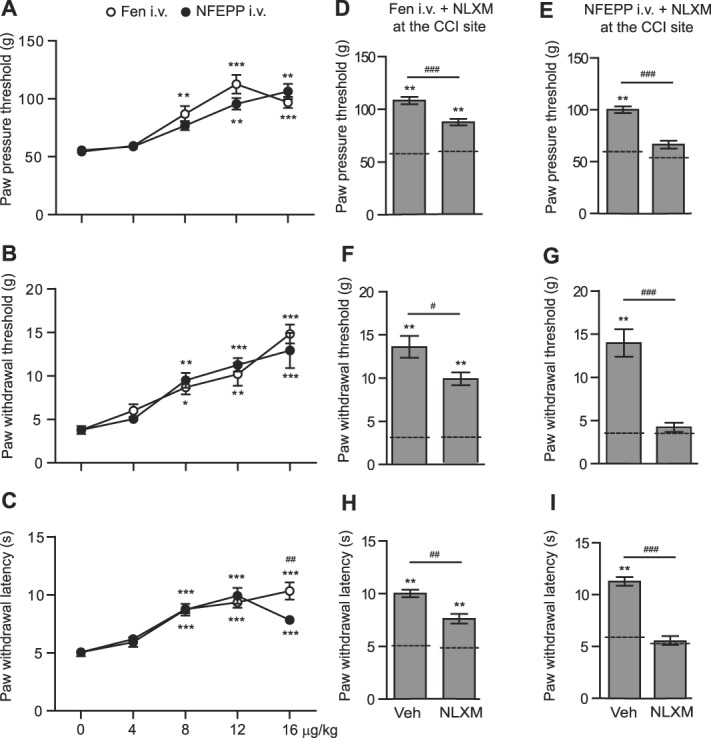Figure 4.

Contribution of peripheral opioid receptors to analgesic effects of intravenous (i.v.) fentanyl and NFEPP in the neuropathic pain model. (A–C) Effects at 15 minutes after i.v. fentanyl (Fen) or NFEPP on mechanical hyperalgesia (A), mechanical allodynia (B), and heat hyperalgesia (C) in ipsilateral paws at 14 days after CCI. *P < 0.05, **P < 0.01, ***P < 0.001 vs control (0 µg/kg), Kruskal–Wallis 1-way ANOVA followed by Dunn test (A and B), or 1-way ANOVA followed by Bonferroni test (C); ##P < 0.01 Fen vs NFEPP, unpaired t test (C). The data are the same as those in Figure 3 measured at 15 minutes in ipsilateral paws. (D–I) Effects of NLXM (50 µg) or vehicle injected at the nerve injury site (CCI site) on analgesic effects of Fen (D, F, and H) and NFEPP (E, G, and I) (both at 12 µg/kg i.v.) in mechanical hyperalgesia (D and E), mechanical allodynia (F and G), and heat hyperalgesia (H and I). NLXM was injected immediately before agonists and the effects were assessed 15 minutes later. **P < 0.01 vs corresponding baseline threshold/latencies (dashed lines) evaluated 14 days after CCI, but before any injections, Wilcoxon test; #P < 0.05, ##P < 0.01, ###P < 0.001, Mann–Whitney test. Data are expressed as mean ± SEM; n = 6 to 9 rats per group. ANOVA, analysis of variance; CCI, chronic constriction injury.
